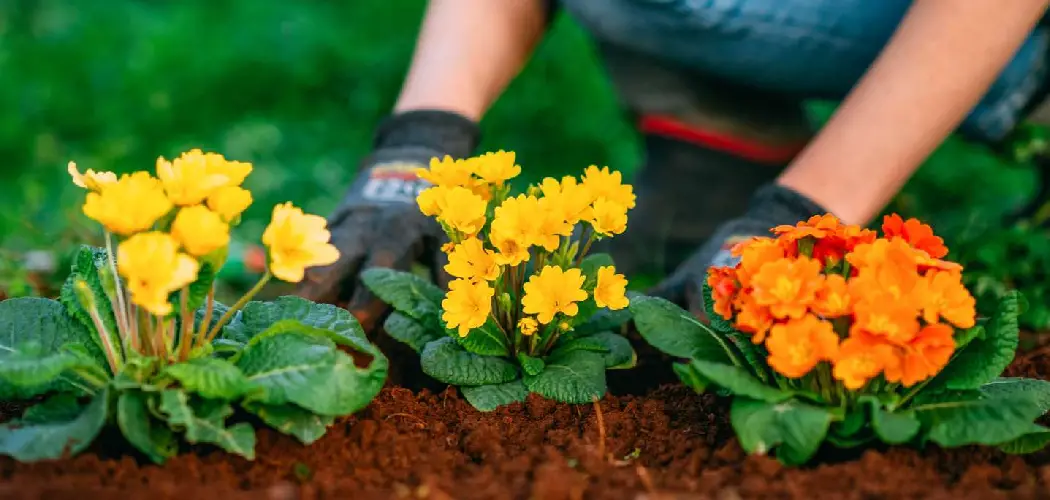Making your garden flowers can be a fun and rewarding hobby. Not only is it entertaining, but it also allows you to add unique beauty and color to your property. It is also relatively inexpensive compared to buying flowers from a nursery or florist. When planting garden flowers, you should choose the right type of flower for your climate and soil conditions.
There are many advantages to making your garden flowers. One of the main benefits is cost, as DIY flowers can be much more affordable than buying them from a florist or nursery.

Additionally, when making your garden flowers, you have complete control over the color palette and design, allowing you to create a unique look for your outdoor space. You can find step-by-step instructions on how to make garden flowers in this blog article.
Step-by-Step Processes for How to Make Garden Flowers
Step 1: Inspect the Area
Before beginning any garden project, inspecting the area and removing any obstacles that could impede your progress is important. This includes removing weeds and old foliage before planting new flowers.
Once you have cleared the space, it’s time to choose the type of flowers you would like to grow in your garden. Consider variables such as climate, color palette, and the amount of sunlight the area receives when selecting.
Step 2: Preparing Soil
The next step is to prepare the soil. To do this, you must add compost or manure to help nourish the plants and improve drainage. Additionally, you can use a trowel or spade to aerate the soil. After the soil is prepared, it’s time to plant your flower seeds or bulbs in whatever pattern you have chosen. This should be done carefully with hand tools such as a trowel and watering can.
Step 3: Watering
Once all the plants are planted, thoroughly water them to promote healthy root growth. Watering should be done regularly for best results. Applying fertilizer to your garden flowers is essential for proper growth and development, and many options are available depending on the type of plant you have chosen.
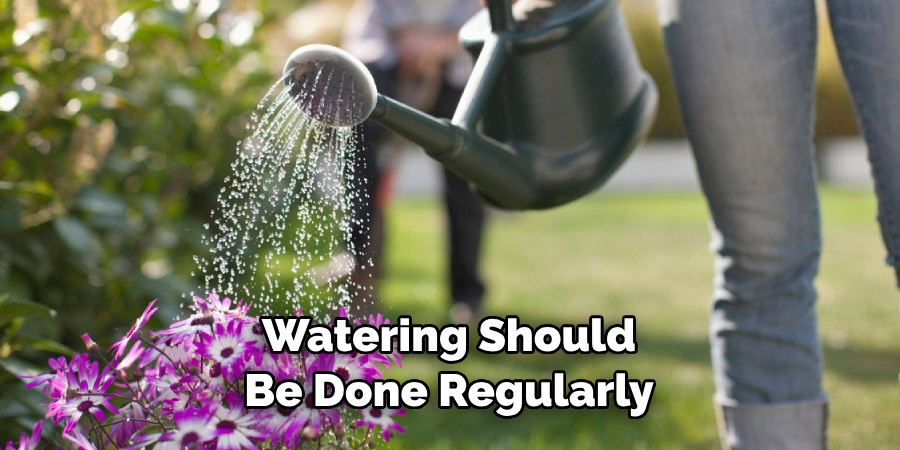
Step 4: Weeding
As with any garden, weeding is an important part of the process. Remove unwanted plants or weeds, as they compete with your flowers for nutrients and water. When necessary, prune your garden flowers to promote healthy growth. This should be done at least once per season using pruning shears or clippers.
Step 5: Deadheading
To encourage the re-blooming of most garden flowers, it is important to perform deadheading. This is done by removing spent or dying blooms from the plant to free up energy for new growth. The last step in making garden flowers is simply enjoying them. Take time to appreciate all the beauty and hard work you have put in to create a stunning outdoor space.
Precautions for How to Make Garden Flowers
- Wear protective clothing, such as gloves and eyewear, when working with chemicals or tools to avoid injury.
- Follow all manufacturer instructions carefully when using any equipment, and take care to keep it manageable with heavy usage.
- Keep children away from areas where you are gardening; they could be in danger of sharp objects or chemical exposure.
- Use proper containers and tools for planting, such as pots, shovels, trowels, and gloves; improper use can cause damage to flowers or soil.
- Make sure any chemicals you use are safe and approved for the environment in which you’re gardening.
- Keep an eye on the weather forecast when planning outdoor activities; unexpected storms or high winds can quickly ruin garden projects.
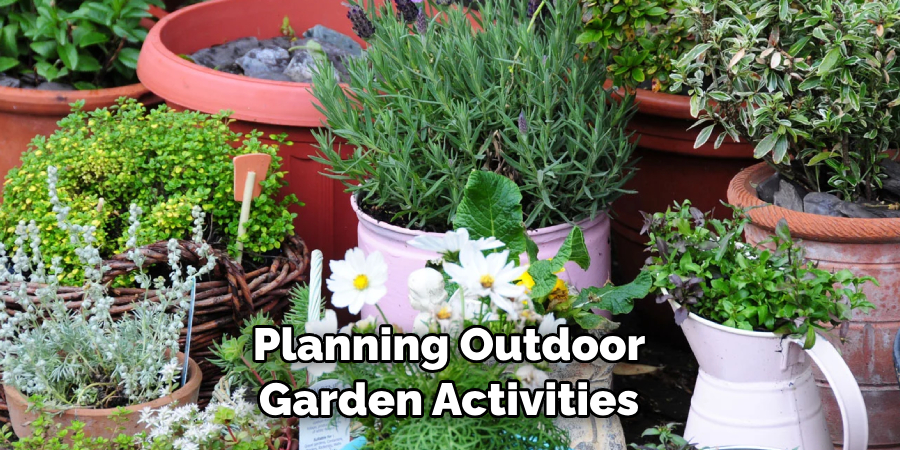
When planting, make sure to dig up enough soil for the plant and create a hole that is the same depth as the root ball of the flower. Add compost or fertilizer to enrich the soil if needed, and use proper drainage techniques so water doesn’t build up in your flowerbeds.
What Type of Flowers Do You Want to Make?
When you want to make garden flowers, the first decision you’ll need is what type of flower you’d like to create. There are various options, from annuals, perennials, biennials, and tropicals. Annuals can be planted yearly with a new batch of seeds, while perennials return year after year.
Biennials take two years to complete their life cycle, while tropicals require warm temperatures and sunshine. You should also consider the size of your garden when deciding what type of flowers you’d like to make, as some may be too large for a smaller space.
Once you’ve decided on the type of flower you want to make, it’s time to move on to the next step: soil preparation. This is important for ensuring your garden plants thrive in their new home. It’s always best to start with high-quality soil rich in organic matter. You can add compost or other organic additives to enrich the soil further and help it retain moisture.
Do You Need to Plan a Maintenance Schedule for Your Garden Flowers?
It is important to plan a maintenance schedule for your garden flowers. Depending on the flower you have planted in your garden, some types may require more frequent care than others. Perennials tend to require less frequent care since they come back each year and do not need to be replanted annually. On the other hand, Annuals will need to be replanted each year.
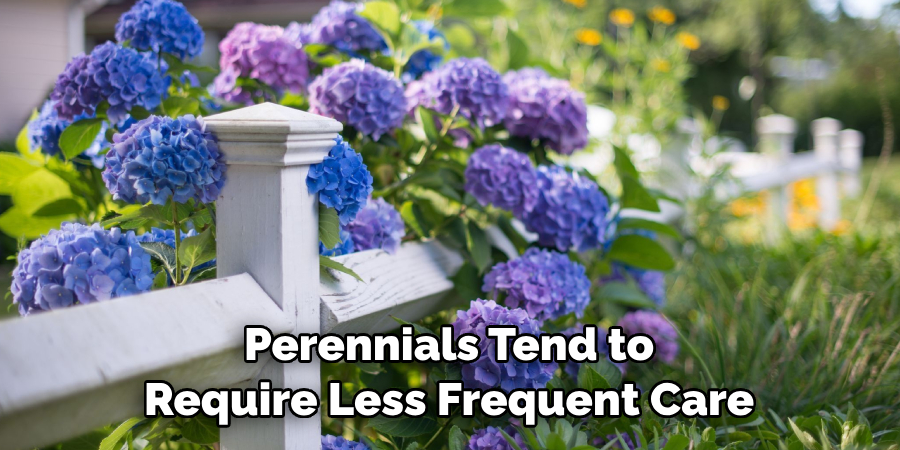
You should also plan for regular pruning and fertilizing of your flowers throughout the growing season. Regular watering is necessary for annuals and perennials, so check the soil moisture levels before drinking them.
Additionally, you’ll want to consider any potential pest or disease issues and watch for signs of trouble. Planning a maintenance schedule for your garden flowers will help ensure that your blooms look their best throughout the season and beyond.
Are There Any Special Requirements That Must Be Met to Grow Your Flowers?
Yes, certain requirements must be met to grow garden flowers successfully. For instance, depending on the type of flower you’re growing, you’ll need to consider its need for light and soil moisture. Additionally, some varieties may require special fertilizers or other amendments to thrive.
Researching the specific requirements of your chosen blooms will ensure that you provide them with all the care they need to succeed. Additionally, it’s important to remember any potential disease or pest pressures that could affect your plants and be mindful of any areas where these problems may be present.
With some research and preparation, you can provide your garden flowers with the best possible growing environment for success.
How Much Time Will You Need to Dedicate to This Project?
When making garden flowers, giving yourself enough time and energy to dedicate to this project is important. The amount of time and energy required will vary drastically depending on the type of flowers you want to create. For more simple projects, such as daisy bouquets or sunflowers, you may only need an hour or two if you plan well.
However, it could take several days to complete the project for more complex projects, such as designing a garden filled with various flowers or making intricate arrangements.
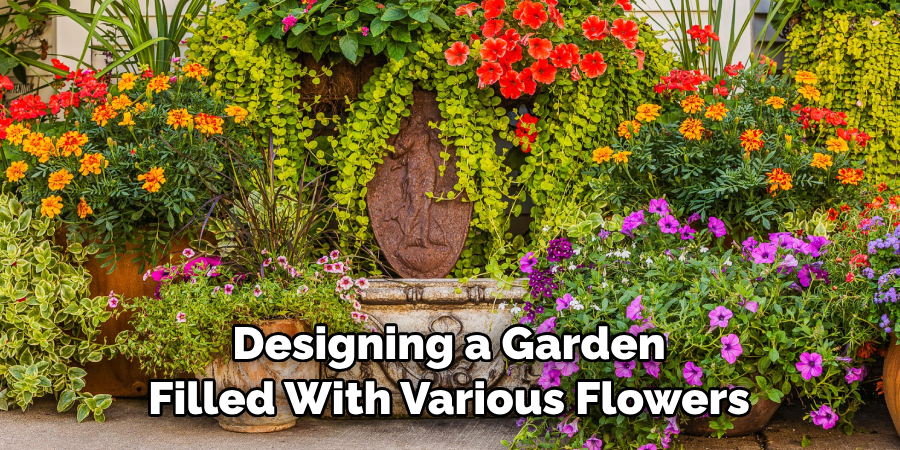
When planning your flower-making endeavors, consider the amount of time you have available and plan accordingly. Prioritize tasks and organize them in order of importance so that you can stay on track.
Additionally, be sure to factor in unexpected events that may occur so that you can adjust your timeline as needed. With the right amount of planning and dedication, it is possible to create stunning garden flowers.
Is There Anything You Should Know About Caring for Your Garden Flowers?
Once you’ve planted and grown your flower garden, remember a few things for optimal care. Properly caring for your garden flowers means they will bloom longer and be healthier. The amount of water your flowers need will vary depending on the type of flower and how hot it is outside.
Generally speaking, it’s best to water your flowers in the morning so that they get enough hydration before the hot sun hits. You should also avoid getting water on the leaves and petals, which can lead to diseases.
In terms of feeding your garden flowers, you’ll want to give them a slow-release fertilizer every few weeks after planting. This will help them remain healthy and promote their growth. Consult your local garden center or a gardening expert if you need help deciding which fertilizer to use.
When it comes time to prune and trim your garden flowers, make sure that you take the appropriate steps to ensure they stay healthy. Pruning helps promote air circulation in the plant and encourages new growth. It’s also important to deadhead or remove old flowers to ensure the plant will continue producing new blooms.
Conclusion
In conclusion, learning to make garden flowers is an enjoyable and rewarding hobby. Not only does it provide beautiful blooms for your outdoor space, but it also helps to create a peaceful sanctuary in your backyard. Start with easy-to-grow annuals such as petunias or marigolds if you’re just starting.
Once you get the hang of gardening basics, you can experiment with more challenging perennials or even start a vegetable garden. Research the type of plants that best suit your climate and size of space, use good soil and fertilizers, water regularly, and pull any weeds that pop up.
I hope this article has been beneficial for learning how to make garden flowers. Make Sure the preventive measures are followed chronologically.
You Can Check It Out to Make Wire Flowers

